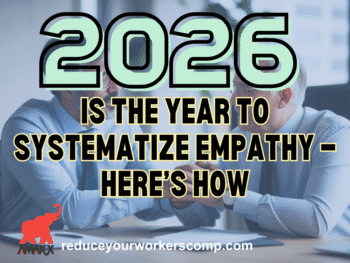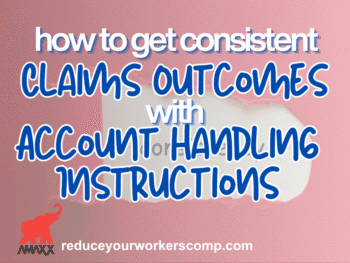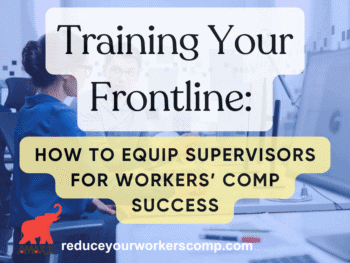Tip: Use FORMAL and INFORMAL communication styles.
What is the difference between formal and informal communication and how do I use these to communicate to my injured employees? Formal communication is explicit concrete communication. Formal communication can be a written document such as an employee brochure, a post injury response checklist, a workers’ compensation policy.
Informal communication is implicit — the way you speak to your injured employees, the questions you ask, the body language they use when responding to you. Informal communication include gestures, facial expressions, body language, attitude.
Use formal communication to induct and train your employees into workers’ comp management policies programs and procedures.
A workers’ compensation policy tells all employees exactly what the company’s mission statement is and what is expected of the employee population going forward.
An employee brochure provides step-by-step instructions telling employees how to respond if they are injured. The employee brochure contains contact information and a summary of post injury responsibilities for reference. Brochures are a great way for employees to take the information with them wherever they go.
A post injury response checklist will help employees in the throes of a crisis, check off each responsibility to ensure that nothing is overlooked and the job of resolving the crisis is well done.
Informal communication can occur when you are communicating with injured employees who may or may not be out on comp. Listen not so much to what the employee is saying but the way they are saying it.
1. Do they have an attitude of openness, willingness to return to work?
2. Are they positive?
3. Do they make eye contact?
4. Have they become psychologically dis-employed?
5. Do they respond to your phone calls? Are they exaggerating symptoms?
Caveat: While you can make these inferences, you must be careful to back them up with careful documentation. For example, if you think your employee has become psychologically dis-employed, have your weekly communication meetings on-site and ensure the worker sees and gets to visit with co-workers. If you think an employee is exaggerating symptoms, seek an Independent Medical Examination (IME) to find out what’s really going on. Keep a communication diary with a note of the formal and informal communication instances that occurred. (workersxzcompxzkit)
In summary, usually formal communication comes into play before an incident occurs. Use formal communication to develop strategies, checklists, brochures, wallet cards and other documentation. Informal communication comes into play once the workers’ comp management program is launched, and you are attempting to determine the willingness of injured employees to return to work.
Author Rebecca Shafer, J.D. President, Amaxx Risks Solutions, Inc. has worked successfully for 20 years with many industries to reduce Workers’ Compensation costs, including airlines, health care, manufacturing, printing/publishing, pharmaceuticals, retail, hospitality and manufacturing. She can be contacted at: RShafer@ReduceYourWorkersComp.com or 860-553-6604.
“FRAUD PREVENTION” PODCAST click here: http://www.workerscompkit.com/gallagher/mp3
By: Private investigator with 25 years experience.
WC Books: http://www.reduceyourworkerscomp.com/workers-comp-books-manuals.php
TD Calculator: www.ReduceYourWorkersComp.com/transitional-duty-cost-calculator.php
WC Calculator: http://www.reduceyourworkerscomp.com/calculator.php
Do not use this information without independent verification. All state laws vary. You should consult with your insurance broker or agent about workers’ comp issues.
©2009 Amaxx Risk Solutions, Inc. All rights reserved under International Copyright Law. If you would like permission to reprint this material, contact Info@WorkersCompKit.com

















